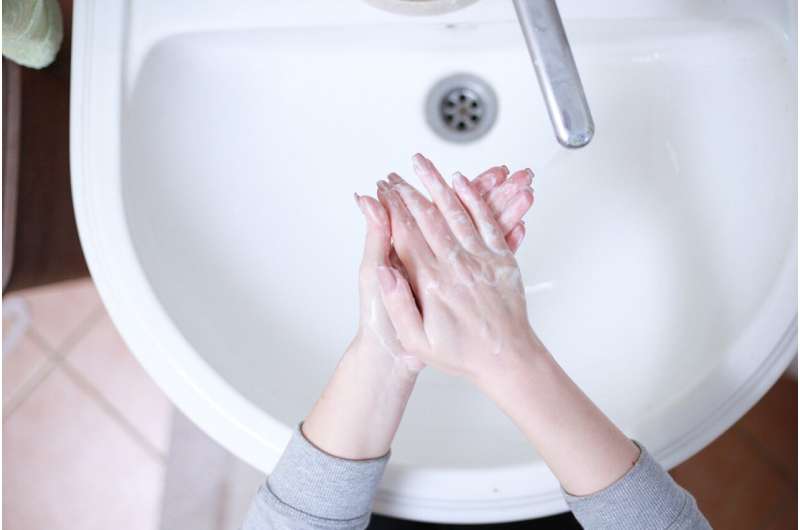Credit: Pixabay/CC0 Public Domain
Findings from a pilot study published today in the American Journal of Infection Control (AJIC) suggest that portable thermal imaging cameras might provide a new approach to assessing and improving hand-hygiene practices among health care professionals (HCPs).
"Effective hand hygiene is recognized as the single most important act to prevent the transmission of potentially pathogenic microbes in the health care setting, but there is no widely adopted method for assessing the effectiveness of health care professionals' hand hygiene technique," said John Boyce, MD, a private consultant at J.M. Boyce Consulting, LLC, and a study author. "Our study shows that thermal imaging shows promise as an approach that warrants additional research to determine if it can be used for routine monitoring of hand hygiene technique to improve patient care."
The World Health Organization (WHO) and the U.S. Centers for Disease Control and Prevention (CDC) both recommend the use of alcohol-based hand sanitizer (ABHS) in their hand-hygiene guidelines. ABHS application technique, including the quantity of liquid used and length of hand rubbing, has a substantial impact on antimicrobial effectiveness. Several studies have documented that HCPs often fail to apply ABHS to their thumb and fingertips.
Based on a previous study demonstrating that transient reductions in skin temperature occur following topical application of ABHS, Dr. Boyce and his colleague, Richard A. Martinello, MD, sought to determine whether thermal imaging with a portable infrared thermal camera could reveal whether ABHS had been appropriately applied by HCPs, including to their fingertips and thumbs. Using an infrared camera attached to an iPhone, they obtained thermal images of 12 HCPs' dominant hands, recording baseline readings of the mid-palm area, the tips of the third finger and thumb before and then at multiple time points after the study participants performed hand hygiene with ABHS (immediately after hands felt dry, and at 1 minute and 2 minutes later).
The images revealed significant decreases in mid-palm, finger and thumb temperatures after the participants performed hand hygiene (p < 0.01 for all sites), confirming that the infrared camera was capable of detecting color changes that reflected drops in temperature. The researchers also found that when participants performed ABHS without including their thumbs, a lack of colorimetric change in the thumbs was visible in the resulting thermal images.
One volunteer with large hands did not have decreased temperatures at the palm, finger, or thumb after applying ABHS, suggesting that thermal imaging could also help measure the amount of ABHS needed based on HCP's individual hand surface area.
"The findings from this pilot study are exciting, because they are the first to evaluate a new tool that might help infection preventionists assess the quality of hand hygiene technique during educational sessions, periodic competency evaluations, and routine patient care," said Linda Dickey, RN, MPH, CIC, FAPIC, 2022 APIC president.
More information: Pilot Study of Using Thermal Imaging to Assess Hand Hygiene Technique, American Journal of Infection Control (2022). DOI: 10.1016/j.ajic.2022.07.015
Journal information: American Journal of Infection Control
Provided by Association for Professionals in Infection Control
























